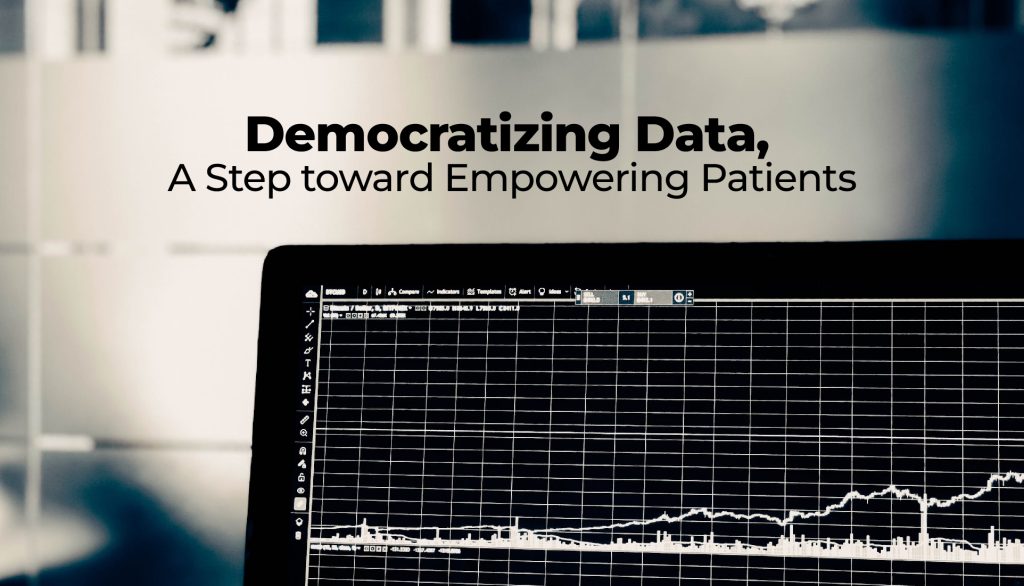We’ve all heard about Value-based Care (VBC). Many of us have even worked within its frameworks. But a pressing question remains: How much ‘value’ has it truly delivered to patients? VBC had a simple value proposition: moving away from a fee-for-service (FFS) model, where providers are paid based on volume of services, and towards a system that rewards patient OUTCOMES (effectiveness of care > volume of care).
But this simple premise spawned an entire industry! Consultants emerged left and right, offering expertise in navigating VBC metrics. Software solutions promised optimal scorecards, while seminars and workshops championed the best practices to stay ahead in the VBC game. However, lost in this hustle of industry evolution and the race for higher ratings is the core value that was promised to patients. Instead, the spotlight seems to have shifted to benefiting the organizations, not the very individuals the system was designed to serve.
Enter data analytics. In a landscape clouded by competing interests and priorities, the importance of data analytics in healthcare has emerged as a catalyst for innovation. It’s the compass guiding us through the maze, especially when it comes to understanding and enhancing population health.
HEDIS, Stars Ratings, and Beyond
As the industry transitioned from the FFS model to the newer approach of VBC, it became crucial to define, measure, and benchmark the very essence of “value” in healthcare. This shift wasn’t just a change in payment structures—it was an attempt to recalibrate the focus of healthcare towards optimal patient outcomes and cost efficiency. With such a profound transformation at hand, the healthcare industry faced the challenge of quantifying these intangible concepts of value and quality. This led to the introduction of various metrics and programs, each striving to define a piece of the intricate VBC puzzle.
HEDIS (Healthcare Effectiveness Data and Information Set): A tool primarily for health plans to gauge performance in care and service dimensions, HEDIS was among the early attempts to standardize and improve healthcare quality. While it provides a broad comparison of health plan performances, these ratings, typically gauged with a score from 1-5, are a good start but not thorough enough in evaluating the nuances of care quality delivered at an individual level.
Stars Ratings: Specifically designed for Medicare Advantage plans, the Star Rating System aimed to give beneficiaries insight into a plan’s quality. It’s not just about clinical outcomes; it considers patient experience, access to care, and management processes. This multifaceted approach, while encompassing a broad spectrum of care facets, can sometimes mask genuine care quality, with a plan ticking off boxes for ratings without necessarily excelling in patient-centered care.
MIPS (Merit-based Incentive Payment System): MIPS amalgamated several payment programs, emphasizing quality, improvement, interoperability, and cost. While its purpose is evident – streamlining the landscape – the inherent design introduces complexities. For example, providers now need to grapple with shifting performance thresholds and managing multiple reporting requirements, making it challenging to keep up and often detracting from the actual delivery of care.
MACRA (Medicare Access and CHIP Reauthorization Act): MACRA’s goal was to pivot away from the fee-for-service model, promoting value and coordinated care. But with its ambitious scope, providers found themselves burdened with increased reporting duties, confusing interface experiences, and the tedious task of ensuring every nuance is captured correctly. The intensified administrative tasks with MACRA make me question the trade-off between ensuring compliance and dedicating time to patient care.
Good Intentions Entangled in Complex Implementations
The evolution of these programs paints a picture of a healthcare sector striving for enhancement in patient outcomes and care quality. But, despite the best intentions, the introduction of these systems often adds layers of complexity for providers. Instead of refining care, we seem enveloped in a whirlwind of metrics and benchmarks. The challenge, then, isn’t just about championing new measures; it’s about ensuring they genuinely amplify patient care without overshadowing the core mission: actually deliver high quality care to patients.
Now that we’ve broken down the VBC Alphabet Soup, we see a pattern emerge.
So much so, that sometimes doctors end up treating the computer screen as much as they’re treating their patients! This isn’t just an inconvenience; it’s a tangible shift AWAY from patient-centered care.
Democratizing Data, A Step toward Empowering Patients

Democratization of data isn’t just about making data accessible; it’s about ensuring the right people can understand and act upon it. – Dr. Maanas Samant
How do we streamline this? How can we ensure that our healthcare professionals can refocus their efforts back onto their patients without being held hostage by endless metrics? One answer lies in the democratization of data.
This isn’t just about making data accessible; it’s about ensuring the right people can understand and act upon it. Consider a scenario where not just administrators or IT professionals, but doctors, nurses, and even patients themselves can easily comprehend healthcare data at an individual level. I don’t mean DNA testing every patient and “personalized medicine” based on their genome – “yea doc give me the tylenol that goes best with my CYP2D6 mutation!” When I talk about democratization, I’m talking about leveling the playing field, ensuring that all stakeholders, especially patients, have a clear and transparent understanding of their health metrics.
The Role of Healthcare Data Analytics
Data analytics in healthcare offers potential solutions, aiming to find a way to navigate the maze of metrics. It promises a FUTURE where information isn’t just hoarded but is disseminated, deciphered, and applied in ways that directly benefit patient care. However, while visions of the future are compelling, we must address the VBC scenario as it stands TODAY – and one solution to that is to use data to simplify how to make the biggest impact and have continuous improvement to multiple programs, hopefully making an impact to patient outcomes along the way.
Data Solutions in Healthcare: Navigating Challenges and Costs
Now with the stage set full of intricacies of VBC and the pressing need for data democratization, let’s unpack the steps, along with the challenges, involved in harnessing data to enhance VBC performance.
Data Infrastructure: Setting up a robust data infrastructure is not only technically demanding but also financially taxing. Initiatives like getting data from different systems, databases and areas in a single org is difficult. Even consolidating this on platforms such as Snowflake, come with significant time and financial implications. In healthcare the value of data integrity and security is especially important. Moreover, the ever-evolving nature of VBC programs requires algorithms to be updated annually, further inflating costs.
Frequency of Data Processing: Gleaning insights from data is invaluable, but each analysis comes with an associated cost. The difference between daily and monthly data processing can escalate expenses substantially. As healthcare moves towards more real-time interventions (like real-time monitoring), this is becoming an increasing need, further complicating the cost considerations. Healthcare institutions must, therefore, find an equilibrium between the richness of insights and their budgetary constraints.
Lack of Data Ownership: In many cases, healthcare organizations turn to third-party entities for data management and processing. While this brings specialized expertise, it also creates an issue of data sovereignty. Relying on external parties can lead to diminished control over an organization’s most crucial asset – its data.
With the need for powerful processing, there’s a rising demand for robust data engines to keep pace with the volume and complexity of healthcare data. The newer wave of solutions (like Neuron) set themselves apart by allowing organizations to run its engine wherever they prefer – locally, on any cloud platform, and more. The most significant advantage with these solutions is Zero data handoffs so organizations don’t need to cede control of their data; they simply harness an engine like Neuron’s processing prowess, ensuring both efficiency and data sovereignty. Also by running an engine internally (whether private cloud or local), the data transfer time is reduced compared to a 3rd party, which can be crucial for making timely healthcare decisions.
In Conclusion
The journey so far of VBC has been filled with complications. The original goal is nearly forgotten (except in marketing materials), and reality is an industry built to game the systems in place. Even if VBC was born of good intentions, it often finds itself ensnared in the complexities of implementation. Data Analysis, the current Prince-who-was-Promised, introduces its own set of challenges, from the monumental costs of infrastructure to the delicate balance of ownership and privacy.
Yet, amidst these challenges lie vast opportunities! The emergence of innovative solutions, like Neuron, suggest a brighter, more streamlined present towards a brighter future. As we move forward, the focus must not only be on technological advancement but also on simplifying and ensuring that at the heart of all these efforts, patient care remains paramount. With strategic planning, collaboration, and continuous innovation, we can harness the power of data and truly elevate the healthcare experience for providers and patients alike.


